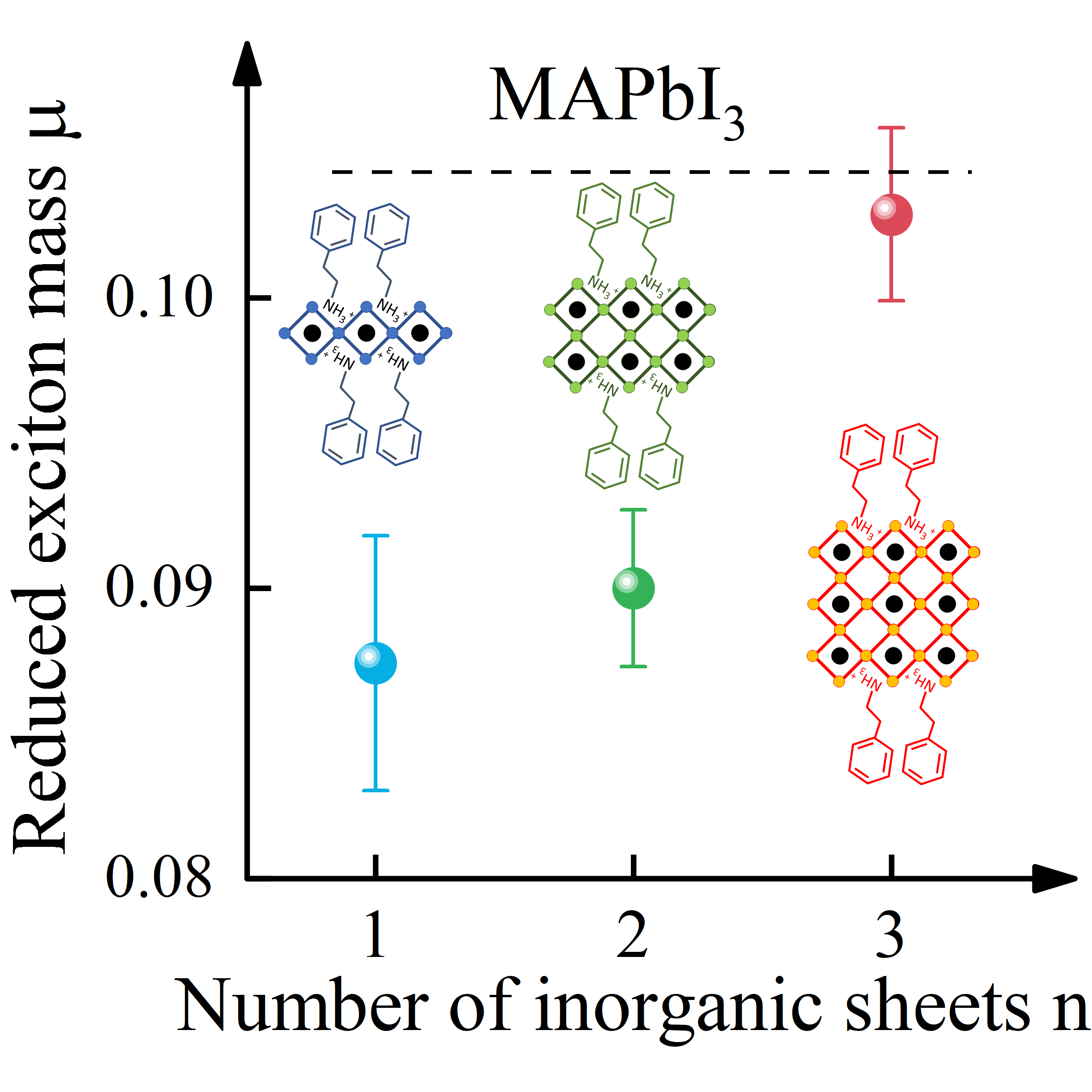Mateusz Dyksik, Wrocław University of Science and Technology and Paulina Plochocka, LNCMI Toulouse.
Two-dimensional (2D) metal-halide perovskites constitute an important step in the evolution of low-cost organic-inorganic hybrid light absorbers and emitters. Similar to their 3D counterparts, layered perovskites show promising performance in photovoltaic and light emitting devices while preserving high environmental stability. The latter is of paramount importance for the industrialization of perovskite technology. In 2D perovskites the improved stability stems from the large hydrophobic organic cations L separating inorganic octahedral sheets. The general formula describing Ruddlesden-Popper (RP) 2D layered perovskites is L2An-1MnX3n+3, where A is a small monovalent cation, M is a metal atom, X is a halide atom, and n denotes the number of octahedral layers. Despite their popularity and successfully deployment in various opto-electronic devices, some questions about their fundamental opto-electronic properties remain unanswered. For example, determining the effective mass of charge carriers in 2D perovskites is challenging, with most attempts so far limited to density functional theory (DFT) calculations. In principle, it is interesting to understand how the charge-carrier effective mass changes with increasing n, as the crystal structure evolves from that imposed by the large organic spacer L, to the crystal structure determined mostly by methylammonium (MA), i.e., in the bulk limit. Currently, the only report addressing this problem is limited to the case of butylamine (BA) [Blancon et al., Nat. Commun. 9, 2254 (2018)]. It was shown that the charge-carrier effective mass is enhanced in this 2D perovskite with respect to 3D MAPbI3, and with an increasing number of inorganic sheets n, the effective mass μ decreases, reaching the bulk limit for high n values. We demonstrate that such an observation does not necessarily apply to all 2D perovskites. With the use of optical spectroscopy in high magnetic fields, we observe interband Landau-level transitions which provide direct access to the reduced effective mass μ of the charge carriers in 2D (PEA)2MAn-1PbnI3n+1 perovskites, where n = 1, 2, 3 (see Figure for structure schematics). We demonstrate that μ increases with the number of inorganic layers n, reaching the same value as 3D MAPbI3 already for n = 3. Our observations prove that an appropriate choice of organic spacer and inorganic layer thickness provide efficient methods to engineering the charge-carrier effective mass in 2D perovskites, which can be either lower or higher than in their 3D analogues. Having precisely determined μ, we also report on all important exciton parameters, such as binding energy, in-plane radius, and how these parameters evolve with increasing n. Our experimentally determined parameters can serve as a benchmark for first-principles calculations and exciton models.

Figure: Evolution of the reduced effective mass μ with increasing number of inorganic sheets. Insets show the schematics of each sample (c axis pointing upwards): Black and open spheres stand for Pb and I atoms and build the inorganic framework; phenyl rings with attached ethylammonium groups form large organic spacers L (PEA, C6H5C2H4NH3+). For clarity, the small organic cation (MA, methylammonium) filling the octahedral voids is omitted.
Tuning the Excitonic Properties of 2D (PEA)2(MA)n-1PbnI3n+1 Perovskite Family via Quantum Confinement, M. Dyksik, S. Wang, W. Paritmongkol, D. K. Maude, W. A. Tisdale, M. Baranowski, and P. Plochocka, J. Phys. Chem. Lett., in press;
https://pubs.acs.org/doi/10.1021/acs.jpclett.0c03731
Contact: paulina.plochocka@lncmi.cnrs.fr mateusz.dyksik@pwr.edu.pl






